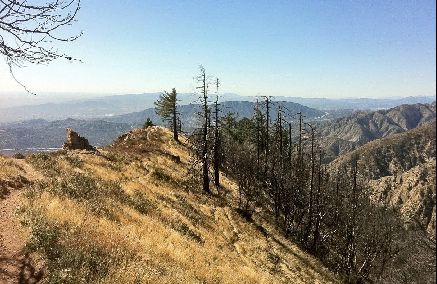Post-Fire Tree-Planting In The Angeles Requires a Sound Plan
|
|
The Sierra Club regularly participates in trail repair and removing non-native plants in Southern California forests and mountain areas. But an issue arose last fall over the Angeles National Forest’s restoration plans after the devastating Station Fire of 2009: Do we need to plant trees? And, if so, what kind?
The fire burned about a quarter of the forest. Since then, the Angeles Chapter has been participating in a variety of restoration efforts. The Forest Service plans to plant 3 million trees, about 300 trees per acre on 10,000 acres, over the next five years. The plan has generated concern among local biologists who point out the forest would recovery naturally on its own with appropriate tree species.
Concerned that the plan may be going down the wrong path, the Natural Science Section and Conservation Committee brought the issue to the Chapter’s governing body and a resolution was passed that provides clear criteria for responsible tree-planting.
But back to the Angeles National Forest plan. It indicates that it largely complies with the California Native Plant Society’s policy statement on tree planting but also mentions the possibility of using species not native to the area if sufficient seed stock is not available.
Conservation Committee members also pointed out the poor past record of adequate watering efforts, citing the frequent sight in the forest of dead seedlings in their protective wire cages.
As a result, the Chapter’s resolution recommends that groups and sections be cautious in participating in treeplanting efforts and check to be sure that any trees to be planted are appropriate to the area and will get adequate care. The resolution, which includes a summary of the California Native Plant Society criteria, is as follows:
“The Angeles Chapter encourages participation in Station Fire recovery efforts to reconstruct trails, restore facilities and signage, and remove exotic species, etc. However, groups, sections, and committees are cautioned about participating in tree-planting projects in the burn areas of the Angeles National Forest. Before participating, the organizer of the work party should verify the following:
- The tree species exists, or existed, in the area chosen for planting.
- The seeds or planting stock were gathered from local sources, or can be shown to be genetically identical to local sources.
- The planted species should represent a full range of species that are found naturally in the area.
- The planted species should be appropriate to the stage of plant community development at the site.
- The planting will not have an adverse effect on rare, threatened, or endangered animal or plant species.
- If the first five conditions cannot be met, but a significant advantage can be claimed through the planting of a non-native species, then only non-invasive species should be used.”
(The complete California Native Plant Society Policy Statement on Tree Planting is available at www.cnps.org/cnps/conservation/policies.php) To participate in trail repair and removal of nonnative species, look online or in the schedule for the Trails Restoration and Weed War events sponsored by the Forest Committee and other chapter entities.




Add new comment